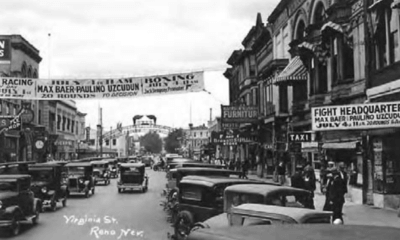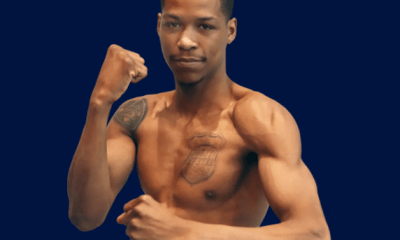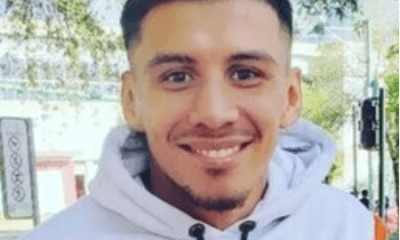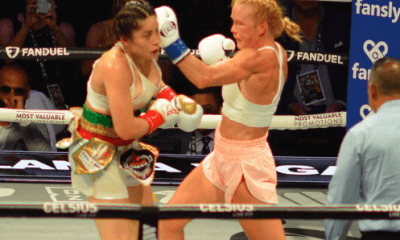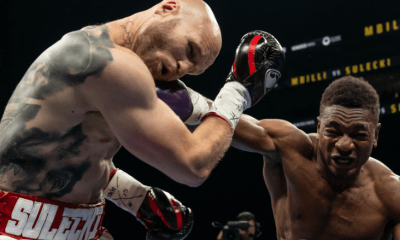Argentina
The Current Crop of Light Heavyweights: How Do They Stack Up?
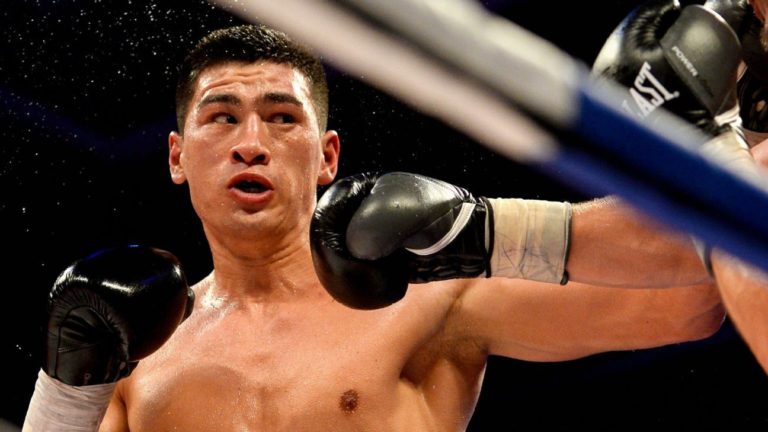
November will be a very interesting month in the light heavyweight division. On November 4, Russia’s Dmitry Bivol (pictured) meets Australia’s Trent Broadhurst in Monte Carlo for the vacant WBA belt. A week later, the IBF version of the 175-pound title is up for grabs when Russia’s Artur Beterbiev, a Canadian transplant, meets Germany’s Enrico Koelling in Fresno. Later in the month, Sergey “Krusher” Kovalev fights Vyacheslav Shabranskyy, a Ukrainian, in the Theater at Madison Square Garden.
The 175-pound class lost luster when Andre Ward retired, but not since the late 1970s and 80s has the division seemed so talent laden and diverse. Take the top eight, shake them up and pick one at random, and more likely than not he is capable of beating any of the others.
The mix in this division now runs from a U.S. fighter from Sweden (Badou Jack) to a Canadian fighter from Colombia (Eleider Alvarez) with seemingly everything in between. Throw a dart or pull up a card and you might get Cuban Sullivan Barrera (20-1) calling out Jack (22-1) who recently retired Nathan Cleverly — winning the WBA title in the process, only to abandon the belt rather than acquiesce to the edict that he fight Bivol next.
But are they as good as the likes of “Vicious” Victor Galindez and Michael Spinks? Could today’s stars compete with the likes of Dwight Muhammad Qawi, Matthew Saad Muhammad, Marvin Johnson and John Conteh — or even Mike Rossman, Yaqui Lopez, Eddie Mustafa Muhammad, brothers Johnny and Eddie Davis, James Scott, and Jerry Martin? There was Vonzell Johnson, Richie Kates, Murray Sutherland, Lotte Mwale, Mustafa Wasajja, Croatia’s Mate Parlov, Marvin Camel, KO artist Willie Edwards, Ghanaian Prince Mama Mohammed, and more.
The division was as deep as a coal mine.
The best part, wrote the eminent boxing writer William Dettloff in 2008, was that “they all fought one another — many more than once. Galindez fought Lopez and Rossman twice each, and also fought Johnson and Mustafa Muhammad. Johnson fought Saad Muhammad (twice), Spinks and Mustafa Muhammad. Spinks fought Mustafa Muhammad, Lopez, both Davis brothers, Johnson and Qawi….Almost all were champions at one time and another, but no one ducked anyone.”
Al Bernstein said, “There were three levels [of fighters there]…Great, really good and good. You had the Davis brothers, who were good, all the way up to Spinks, who was great.” Respected trainer Tommy Brooks added, “Yaqui Lopez and Saad Muhammad and Mustafa Muhammad, those guys were like throwbacks to the guys in the 1940s and ’50s, the way they fought…Those guys knew how to fight. They set traps. They weren’t like a lot of these guys today that just run out there and throw punches. They knew defense as well as offense. They knew what they were doing.”
What serious boxing fan could forget….
- Canada’s Gary Summerhays losing but going the distance in five consecutive fights with Marvin Camel, Edgar Wallace, Vonzell Johnson, Mike Rossman and Michael Spinks during an amazing five-month period in 1977.
- Matthew Saad Muhammad continually snatching victory from certain defeat until the incredible punishment finally caught up to him. He was Gatti before Gatti and the East Coast’s version of Danny “Little Red” Lopez.
- The Spinks Jinx, a long overhand right that resulted in a high KO percentage.
- Mike Rossman’s gritty upset TKO over Victor Galindez in New Orleans in 1978.
- Unheralded Ramon Ranquello’s shocking stoppage of Mike Rossman in Giants Stadium in 1979. Ranquello would go 4-6-2 after this upset.
- Victor Galindez’s legs almost going over in a backwards somersault when he was decked by Marvin Johnson’s lethal left in a huge upset in New Orleans in 1979. Vicious Victor would fight one more time before calling it quits.
Flash forward to 2017. The most prominent light heavyweight is Kovalev who returns to the ring less than six months after being taken out by pound-for-pound king Andre Ward. After supposedly getting his head straight in a monastery in Greece, “Krusher” is anxious to show that his career is not on a downward slope.
Other notables:
Oleksandr Gvozdyk
Fighting out of California, “The Nail” has never met an opponent with a losing record and like many Eastern European fighters with outstanding amateur records he hit the professional road running. This 6’2” light heavyweight is 14-0 with 12 KOs and combines exceptional speed and deceptive power. He is patient, relaxed, and fluid and possesses a remarkable jab. In fact, he stole the show from his Ukrainian stablemate Vasily Lomachenko on April 8 when he put on a short but dazzling display of skill and power against the fearsome looking Cuban Yunieski Gonzalez at the MGM National Harbor in Maryland. Whether he is the next big thing depends on who and how he fights, but he bears serious attention.
Adonis Stevenson
After spending time in prison for a number of egregious infractions including managing prostitutes, the muscular “Superman” got a late start, turning pro at age 29. As a pro he is 29-1 and is the WBC titleholder but caution is the operative word because the 40-year-old Canadian by way of Haiti is a cherry picker; he last fought a mandatory challenger in 2013.
The division is chock full of fighters who would love to engage Stevenson, but that feeling doesn’t appear to be mutual. Eleider “Storm” Alvarez (22-0) has been named his mandatory opponent and there’s talk they will fight in January, but that fight has yet to be signed. Storm probably ended the career of popular Quebecoise Lucien Bute with a stunning one-punch stoppage in February of this year.
Despite his lethal left hook, the aptly named Adonis hardly seems to fit in with the fighters of the 80’s given his propensity to play it safe
Joe Smith
Almost forgotten is heavy-handed Joe Smith (23-2) who shockingly retired Bernard Hopkins but was then schooled by the aforementioned Barrera. Whether that was due to a broken jaw or just a difference in skill level is arguable but it’s up to the New Yorker to resolve that issue. Interestingly, before that fight, many were calling for a New York City showdown between Joe and Staten Island’s Seanie Monaghan. Lo and behold, Seanie was totally dismantled by smooth and powerful Marcus Browne, another New Yorker, and one who warrants serious attention, notwithstanding his controversial win over Bosnia’s Radivoje Kalajdzic in April of 2016. Using logic, which is risky at best when applied to boxing, a fight between Monaghan and Smith at the Nassau Coliseum now makes some real sense with the winner back in the hunt and the loser cast aside.
So let’s return to the original question. Does the current crop of light heavyweights stack up well with the light heavyweights of the late 1970s and early 1980s?
No.
The division is talent-laden and diverse, but for one thing it’s not nearly as deep. Once you get past the top eight or nine, names like Karo Murat and Broadhurst show up.
Bottom line: There is no comparison.
Ted Sares, a member of Ring 4’s Boxing Hall of Fame, is one of the world’s oldest active power lifters and holds several records in the Grand Master class. He has won the EPF Nationals championship four years in a row. He also participates in track and field events in the Senior Games.
Check out more boxing news on video at The Boxing Channel
-

 Featured Articles3 weeks ago
Featured Articles3 weeks agoAvila Perspective, Chap. 330: Matchroom in New York plus the Latest on Canelo-Crawford
-

 Featured Articles2 weeks ago
Featured Articles2 weeks agoVito Mielnicki Jr Whitewashes Kamil Gardzielik Before the Home Folks in Newark
-

 Featured Articles4 weeks ago
Featured Articles4 weeks agoAvila Perspective, Chap 329: Pacquiao is Back, Fabio in England and More
-

 Featured Articles4 weeks ago
Featured Articles4 weeks agoOpetaia and Nakatani Crush Overmatched Foes, Capping Off a Wild Boxing Weekend
-

 Featured Articles3 weeks ago
Featured Articles3 weeks agoCatching Up with Clay Moyle Who Talks About His Massive Collection of Boxing Books
-

 Featured Articles4 weeks ago
Featured Articles4 weeks agoFabio Wardley Comes from Behind to KO Justis Huni
-

 Featured Articles1 week ago
Featured Articles1 week agoMore Medals for Hawaii’s Patricio Family at the USA Boxing Summer Festival
-

 Featured Articles4 weeks ago
Featured Articles4 weeks agoDelving into ‘Hoopla’ with Notes on Books by George Plimpton and Joyce Carol Oates

